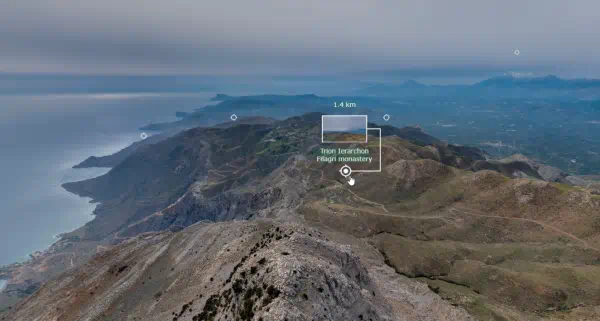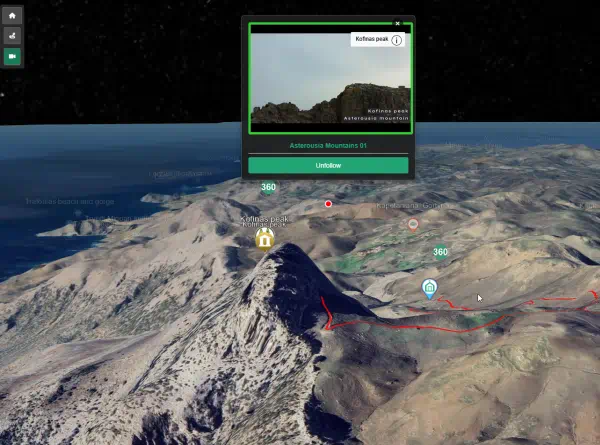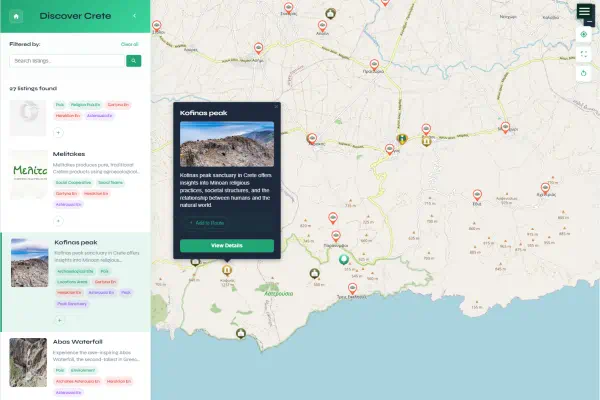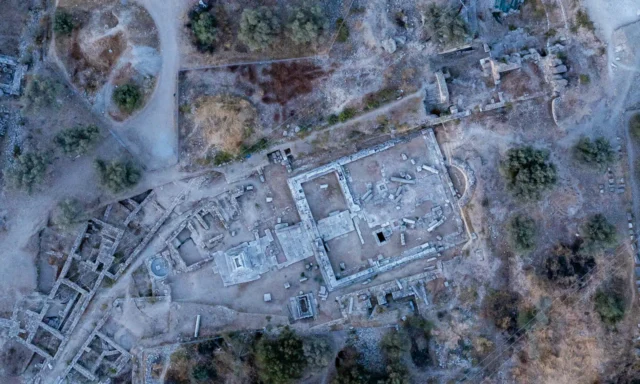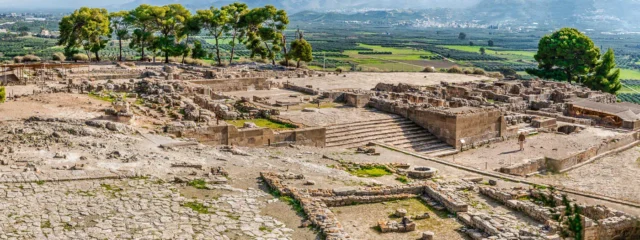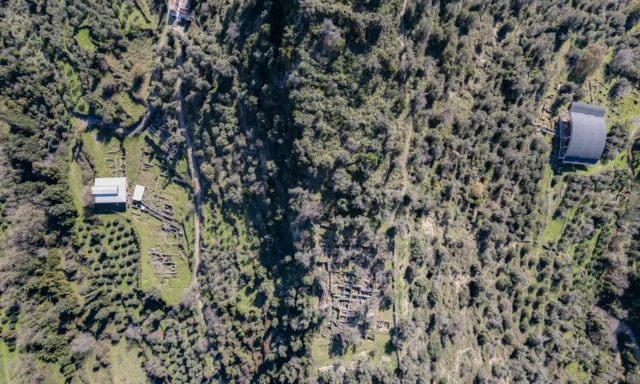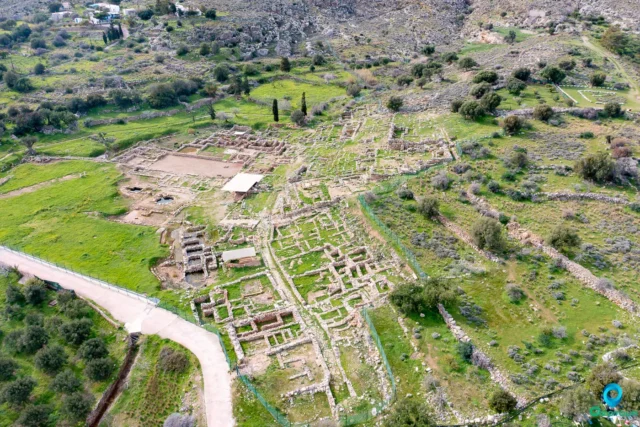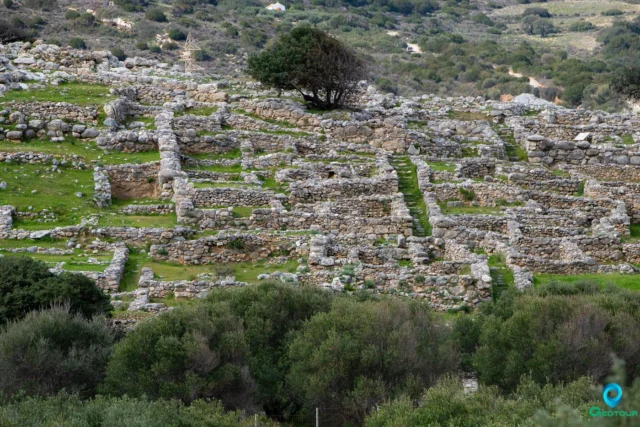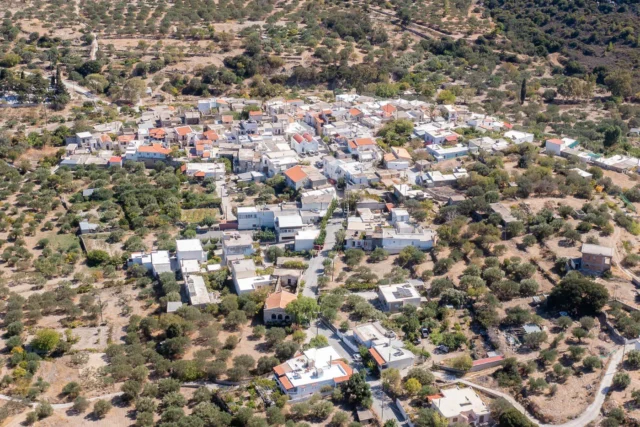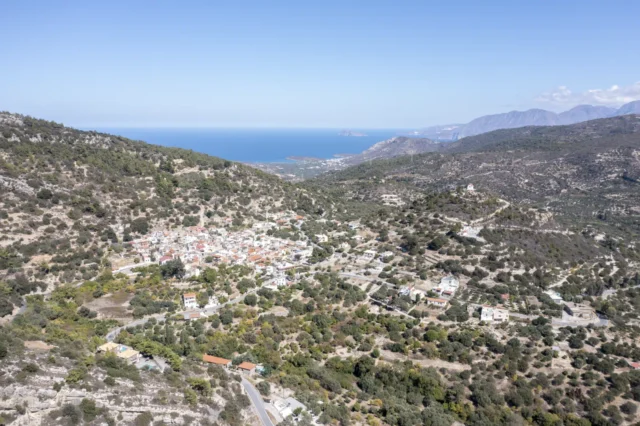Pachia Ammos (Πάχεια Άμμος) is a coastal village and the seat of the homonymous Community of the Municipality of Ierapetra, in the Regional Unit of Lasithi, Crete. It is located on the road connecting Agios Nikolaos with Siteia and Ierapetra, 19 kilometers east of Agios Nikolaos and 13 kilometers north of Ierapetra, at the back of the Gulf of Mirabello. The Institute for the Study of Prehistoric Aegean Eastern Crete is based there, which conducts archaeological research in the area [1]. A short distance from the settlement is the archaeological site of Gournia [1].
History
The toponym Pachia Ammos (Pacchianamo) is mentioned by Francesco Basilicata in 1630, but there was no settlement. The settlement was created in the second decade of the 20th century, with the construction of warehouses for imports – exports and a small number of houses. The regular ship made a short stop in Pachia Ammos to serve the small traffic. The American archaeologist Richard Seager, who conducted excavations on the islands of Psira, Mochlos and Vasiliki, built his house in Pachia Ammos in 1910 [2]. Pachia Ammos is mentioned for the first time in the censuses in 1920, in the Community of Vasiliki, and then developed rapidly and became the seat of the homonymous Community and is developing into a tourist center, thanks to its beach.
Infrastructure
In Pachia Ammos there is a rural medical center, a cultural association, a primary school and a kindergarten. There are also grocery stores, a bakery-confectionery, cafes and taverns, as well as guesthouses in the village. The Pachia Ammos bus stop is served by lines to/from Siteia, Agios Nikolaos – Heraklion and Ierapetra.
Points of interest
In front of the village is the homonymous beach, with thick sand and pebbles, which is exposed to the winds. The western part of the beach, however, is protected by the pier of the small harbor located there, so the sea is calm and clean. The central church of the village is Agios Nikolaos. Near the Fishing Shelter of the village, at a key point, is the church of Agia Foteini of Samareitis.
Pachia Ammos in the province of Ierapetra is located 20 km east of Agios Nikolaos, on the road that connects Agios Nikolaos with Siteia and Ierapetra. It is a large seaside village, built on the north side of the narrowest part of Crete, the Isthmus of Ierapetra. The beach, its strategic location between the three major cities of Lasithi, and the important sights of the surrounding area, have helped the mild tourist development of the village.
Pachia Ammos has the longest beach on the northern coast of the province of Ierapetra and has sand to the west and pebble to the east, where the Ha stream flows. Unfortunately, due to the fact that Pachia Ammos is located at the southernmost point of the Gulf of Mirabello, the waves carry a lot of garbage from all over the Aegean and are the permanent headache of the local authorities. However, one can go to the western part of the beach, under the church of Agios Nikolaos, which is protected by a pier that also serves as a port. The beach here is well organized with umbrellas and sunbeds and the water is very clean.
Sights
Pachia Ammos is located on the site of the ancient city of Minoa and hosts the Institute for the Study of Prehistoric Aegean Eastern Crete, which conducts systematic excavations in the wider area and deals with the promotion and protection of antiquities. The most famous archaeological site in the area is the Minoan cemetery and settlement of Gournia, 2 km to the west. The city flourished in 1600 BC and was built on a small hill. About 2 km further west is the historic monastery of Faneromeni, which dominates a cliff with a unique view of the sea.
4 km south of the village, you can visit the Proto-Minoan settlement of Vasiliki, which flourished in 2600-2300 BC and is considered a precursor of the great Minoan palaces and cities. From Vasiliki you can drive 2 km east, to the traditional village of Monastiraki, with its old watermills and the church of Agios Stefanos, nearby is at the exit of the gorge of Ha, which dominates impressively from miles away. Opposite Pachia Ammos is the small island of Konida (ie egg of psira), where you can go by boat. It is interesting how the toponym has arisen, as a few miles further east (opposite Tholos) there is the larger island of Psira, while opposite Mochlos there is the island of Agios Nikolaos, which is also called Psyllos!
Pachia Ammos, which owes its name to its beach rich in sand, is called Pachys Ammos by the locals, since the noun Ammos in the linguistic idiom of Eastern Crete is masculine. In this way, the old Gerapetrites said I go to Pachy Ammos or I am from Pachy (n) Ammos.
Overlooking the Gulf of Merambello and on the crossroads that connects the three major cities of the prefecture, is the seaside village of Pachia Ammos. Characteristic are the many taverns on the sea and of course the important Minoan settlement of Gournia, which is located in the area. The population of the settlement is 574 inhabitants (2011 Census), 162 inhabitants (1928 Census, [first registration).
The blonde thick sand that stretches across the large beach front is obviously responsible for the name with the first reference being made in 1630 without recording the settlement. This was created much later, in the early 20th century and developed very quickly, with small tourist facilities and of course the famous fish taverns.
Today Pachia Ammos is a stop for everyone who visits Lasithi, while in the summer, apart from its large beach, it is also famous for the many events that gather crowds of people.
In Pachia Ammos is now based the Institute for the Study of Prehistoric Aegean Eastern Crete, which oversees systematic archaeological research in the wider area.
Settlement: Key Points
- Historical Significance: Site of ancient Minoa, near the Minoan settlement of Gournia.
- Population Data:
Year |
Population |
Notes |
|---|---|---|
1583 |
||
1881 |
||
1900 |
||
1920 |
67 |
|
1928 |
162 |
|
1940 |
252 |
|
1951 |
280 |
|
1961 |
358 |
|
1971 |
384 |
|
1981 |
430 |
|
1991 |
495 |
|
2001 |
570 |
|
2011 |
574 |
|
2021 |
588 |
- Current Status: Tourist center with beaches, taverns, and archaeological sites.
Culture and Traditions
Pachia Ammos, while a relatively new settlement compared to other Cretan villages, shares in the rich cultural heritage of the island. The presence of the Institute for the Study of Prehistoric Aegean Eastern Crete in the village highlights the importance of preserving and understanding the region’s ancient past. Local festivals and celebrations would likely include traditional Cretan music and dance, reflecting the broader cultural landscape of Crete. Given its coastal location, fishing and seafaring traditions are likely interwoven into the local identity. The emphasis on hospitality, known as philotimo in Greek culture, would be a strong element of social interaction.
Family and Social Life
Family plays a central role in Cretan society, and this would likely be reflected in Pachia Ammos as well. Intergenerational connections are typically strong, with extended families often living in close proximity or even within the same household. Social life in the village would likely revolve around communal gatherings, whether at local cafes, taverns, or during religious and cultural celebrations. Given the growing tourism sector, interactions with visitors from around the world would also be a part of daily life, potentially leading to a blend of local traditions and international influences.
References

